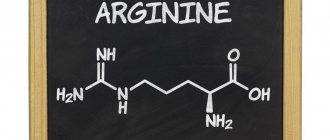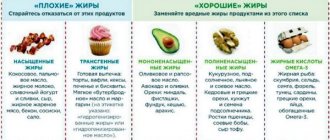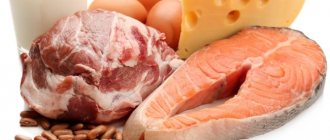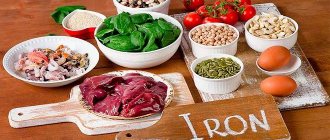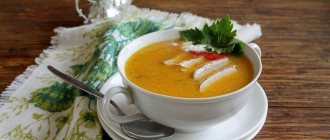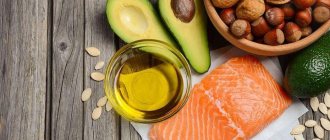Photo source: Shutterstock
Purines
- organic compounds that are found in every cell of the human body, as well as in many plant and animal products.
The main foods rich in purine are meat products
, especially internal organs such as
liver and kidneys
, and even
fish
. Plant-based diets are typically low in purines.
These compounds in food are broken down into uric acid during digestion. They also play a role in the synthesis of DNA and RNA. But their excess can lead to gout and other problems. So the question is, is there any benefit to consuming purine-rich foods, and when should you limit your intake?
Well, let's find out!
Important information about the low purine diet
Rational nutrition is an integral part of therapy. Inflammatory processes occurring in the joints cause a person a lot of discomfort. Gout is a metabolic disorder, in which it is possible to relieve symptoms and reduce the likelihood of complications through nutritional correction. Why is it important? The body produces uric acid as a result of the exchange of purine bases. This happens in the liver. This condition is also called hyperuricemia. Symptoms of increased uric acid in the blood:
- joint pain: the hands and feet are affected first, and then the larger joints;
- hyperthermia and redness of the skin - occurs if the pathology is not treated.
- pain in the lower back, abdomen, painful urination - appear due to damage to the digestive organs and urinary system.
- frequent headaches, insomnia, hypertension, angina pectoris, heart attack caused by damage to the heart and blood vessels;
- formation of dental stones.
Pathology also occurs in children. Only in them it is expressed by skin lesions. Such children often suffer from dermatitis, diathesis and even psoriasis.
Who needs a low-purine diet? The treatment table is also prescribed for urolithiasis. This pathology can be independent or secondary, that is, it occurs against the background of gout. Both diseases are associated with impaired salt metabolism. Therefore, similar nutritional patterns are used in therapy.
The hypopurine diet is based on eliminating foods rich in purines from the diet. This is the material that fills the structure of cells. When purines are broken down, urea is formed. If there is a lot of it, it leads to the development of gout. This is why it is so important to exclude such foods from your diet.
In therapeutic dietetics there is table No. 6. This is a nutritional scheme developed by Pevzner, a general practitioner who was directly related to the creation of the first Institute of Nutrition in the USSR, and is also the founder of dietetics. Patients can take advantage of his recommendations regarding menu planning. Also, the diet can be completely prescribed by the attending physician. The advantage of the latter option is that the doctor will do this based on the characteristics of the individual patient’s body.
Table - Purine content in food products
| HIGH PURINE CONTENT (400 mg. Uric acid / 100 g and above) | ||||
| Products | Total purines in mg urine acid/100 g (average) | Min | Max | Calories in mg/mJ |
| Sardines in oil | 480 | 399 | 560 | 519.5 |
| Calf liver | 460 | 837.5 | ||
| Dried champignons and porcini mushrooms | 488 | 932.8 | ||
| Veal thymus, sweet meat | 1260 | 3012.9 | ||
| Beef liver | 554 | 1013.3 | ||
| Beef spleen | 444 | 1052,6 | ||
| Pig heart | 530 | 1382 | ||
| Pork liver | 515 | 937,9 | ||
| Pork lung (light) | 434 | 911.2 | ||
| Pork spleen | 516 | 1208.2 | ||
| Sheep spleen | 773 | 1702.6 | ||
| Smoked sprat | 804 | 795.6 | ||
| Theobromine | 2300 | 1611.3 | ||
| Yeast for baking | 680 | 2071.3 | ||
| Brewer's yeast | 1810 | 1866.6 | ||
| MEDIUM-HIGH PURINE CONTENT (100 to 400 mg. Uric acid / 100 g) | ||||
| White beans, dried | 128 | 127.1 | ||
| Soy beans, dry | 190 | 139.1 | ||
| Beef, neck | 120 | 192 | ||
| Beef tenderloin, fillet | 110 | 216.4 | ||
| Beef, front rib, entrecote | 120 | 185.4 | ||
| Beef average (meat) | 133 | 292.1 | ||
| Roast beef and Sirloin steak | 110 | 110 | 120 | 201.4 |
| Beef, shoulder | 110 | 203.9 | ||
| Black mung beans, mungo beans, dry | 222 | 194.3 | ||
| Fish caviar, natural | 144 | 141.6 | ||
| Chicken (breast with skin) | 175 | 288.4 | ||
| Broiler chickens (whole carcass) | 115 | 165.8 | ||
| Soup chicken (carcass) | 159 | 149.2 | ||
| Chicken leg with skin and bones | 110 | 152.2 | ||
| Duck | 138 | 146.2 | ||
| Anchovy | 239 | 560 | ||
| Carp | 160 | 330.9 | ||
| Cod | 109 | 335.9 | ||
| Haddock | 139 | 425.2 | ||
| Halibut | 178 | 439.9 | ||
| Herring roe | 190 | 342.4 | ||
| Atlantic Herring | 210 | 216.9 | ||
| Herring, lightly salted | 219 | 197.6 | ||
| Mackerel | 145 | 95 | 194 | 191.2 |
| Zander | 110 | 311.3 | ||
| Red (sea bass) | 241 | 544.1 | ||
| Saida | 163 | 473.4 | ||
| Salmon | 170 | 110 | 250 | 202 |
| Sardine | 345 | 693.2 | ||
| Sole Fish | 131 | 125 | 137 | 376.2 |
| Trout | 297 | 686.7 | ||
| Tuna | 257 | 273.7 | ||
| Tuna in oil | 290 | 246.2 | ||
| Goose | 165 | 116.7 | ||
| Raisins, Kish-Mish | 107 | 86.4 | ||
| Cooked ham | 131 | 248.1 | ||
| Sheep heart | 241 | 367.6 | ||
| horsemeat | 200 | 438.8 | ||
| Veal kidneys | 218 | 419.6 | ||
| Lamb (meat only) | 182 | 371 | ||
| Lentils | 127 | 114.45 | 164.65 | 93.8 |
| Flax-seed | 105 | 67.4 | ||
| Chicken liver | 243 | 426.3 | ||
| Lobster, Omar | 118 | 60 | 175 | 346.4 |
| Veal lungs | 147 | 389.1 | ||
| Mussels | 112 | 391.5 | ||
| Beef heart | 256 | 504.3 | ||
| Beef kidneys | 269 | 569.5 | ||
| Beef lung (light) | 399 | 961.4 | ||
| Beef tongue | 160 | 186 | ||
| Lamb chickpeas, or chickpeas, | 109 | 84.2 | ||
| Pork kidneys | 334 | 784.5 | ||
| Pork tongue | 136 | 208.2 | ||
| Pike | 140 | 406.7 | ||
| Poppy, seed | 170 | 86 | ||
| Pork belly, bacon (pork) | 100 | 80 | 110 | 92.3 |
| Pocherevok, raw smoked bacon, dried | 127 | 82.6 | ||
| Pork chop with bone | 145 | 140 | 150 | 260 |
| Pork, shoulder blade | 140 | 135 | 145 | 170.4 |
| Pork fillet | 150 | 145 | 150 | 334.8 |
| Pork, back thigh with bone (pelvic area) | 120 | 115 | 130 | 155 |
| Ham | 160 | 150 | 160 | 357.4 |
| Pork (meat) | 166 | 374.9 | ||
| Pork, shoulder with skin | 150 | 145 | 150 | 165.2 |
| Rabbit, meat with bones | 132 | 95 | 150 | 207.7 |
| Rabbit | 105 | 219.4 | ||
| Hunting sausage | 112 | 127.8 | ||
| Salami sausage, German | 104 | 65.9 | ||
| Liver sausage | 165 | 122.2 | ||
| Fried pork sausage | 101 | 80.2 | ||
| Scallop | 136 | 505.8 | ||
| Brown shrimp | 147 | 60 | 234 | 397.9 |
| Calf spleen | 343 | 815.9 | ||
| Sunflower seeds, dry | 143 | 59.5 | ||
| Turkey, young meat with skin | 150 | 237.3 | ||
| Veal chop, cutlet with bone | 140 | 309.6 | ||
| Veal, fillet | 140 | 347.3 | ||
| Veal shank with bone | 150 | 140 | 160 | 353.2 |
| Veal leg with bone | 150 | 140 | 150 | 310.2 |
| Veal (meat) | 172 | 438.7 | ||
| Veal, neck with bone | 150 | 326.9 | ||
| Veal, shoulder | 140 | 309.3 | ||
| Venison, back | 105 | 205 | ||
| Venison, thigh | 138 | 105 | 154 | 336.5 |
| LOW PURINE CONTENT (100 mg. Uric acid / 100 g or less) | ||||
| Sweet almonds | 37 | 15.7 | ||
| Apple | 14 | 60.1 | ||
| Apricot | 73 | 71.6 | ||
| Artichoke | 78 | 834.6 | ||
| Asparagus | 23 | 19.71 | 29.57 | 310.9 |
| Eggplant | 21 | 290 | ||
| Avocado | 19 | 20.9 | ||
| Bamboo shoots | 29 | 402.1 | ||
| Banana | 57 | 152.4 | ||
| Barley (hulled grain) | 96 | 71.1 | ||
| Sprouted soybeans | 80 | 378.3 | ||
| Fresh green beans | 37 | 20 | 43 | 266.9 |
| Dried green beans | 45 | 40 | 50 | 39.4 |
| Corned beef (German) | 57 | 96.5 | ||
| Beer, non-alcoholic | 8,1 | 75.4 | ||
| Beer, Pilsner, regular, German | 13 | 75,2 | ||
| Light beer | 14 | 86 | ||
| Beetroot (root vegetable) | 19 | 15 | 21 | 108,5 |
| Blueberry, blueberry, (huckleberry) | 22 | 143.7 | ||
| Veal brains | 92 | 203.1 | ||
| Wheat bread, white | 14 | 13.9 | ||
| Broccoli | 81 | 691.6 | ||
| Brussels sprouts | 69 | 456 | ||
| Red cabbage | 32 | 19.79 | 36.62 | 350.2 |
| Savoy cabbage | 37 | 19.87 | 42.71 | 342.6 |
| White cabbage | 22 | 210.3 | ||
| Carrot | 17 | 14 | 25 | 155.9 |
| Cauliflower | 51 | 537.9 | ||
| Synthetic caviar | 18 | 37.8 | ||
| Celery | 30 | 390.6 | ||
| Brie cheese | 7.1 | 5 | ||
| Cheddar/Cheshire cheese 50% fat | 6 | 4.3 | ||
| Cheese, cottage cheese | 9.4 | 22 | ||
| Edam cheese, 30% fat in dry matter | 7.1 | 6.8 | ||
| Edam cheese, 40% fat in dry matter | 7.1 | 5.4 | ||
| Edam cheese, 45% fat in dry matter | 7.1 | 4.8 | ||
| Limburger cheese 20% fat content in dry matter | 32 | 41.7 | ||
| Cherry Morello | 17 | 75.5 | ||
| Sweet cherry | 7.1 | 64.2 | ||
| Chicory | 12 | 171.8 | ||
| Cabbage | 21 | 412.4 | ||
| Bow of speed | 67 | 581.2 | ||
| Reduced Fat Cocoa Powder | 71 | 49.7 | ||
| Corn, sweet | 52 | 140.9 | ||
| Crayfish | 60 | 220.3 | ||
| Watercress | 28 | 200.8 | ||
| Crispbread | 60 | 44.9 | ||
| Cucumber | 7.3 | 141.7 | ||
| Red currants | 17 | 122.6 | ||
| Dates, dried | 35 | 29.9 | ||
| Black elderberry | 33 | 144.4 | ||
| Endive | 17 | 297.7 | ||
| Fennel leaves | 14 | 10 | 16 | 139 |
| Dried figs | 64 | 60.4 | ||
| Smoked eel | 78 | 45 | 110 | 57.2 |
| Frankfurt sausages | 89 | 68.74 | 129.52 | 80.2 |
| Gooseberry | 16 | 101.3 | ||
| Grape | 27 | 94.6 | ||
| Kozelets Spanish | 71 | 939.4 | ||
| Kale (Kale) | 48 | 309.1 | ||
| Kiwi | 19 | 88.5 | ||
| Kohlrabi | 25 | 10.86 | 29.61 | 243.9 |
| Leek | 74 | 714.1 | ||
| Lettuce | 13 | 9.75 | 29.25 | 274.4 |
| Field salad | 38 | 645.3 | ||
| Cold cuts | 70 | 58.8 | ||
| Melon | 33 | 143 | ||
| Millet, peeled corn | 62 | 41.9 | ||
| Morel mushroom | 30 | 748.9 | ||
| Champignon | 58 | 55.48 | 60.52 | 858.2 |
| White mushroom | 92 | 1011.6 | ||
| Canned mushrooms | 29 | 488.5 | ||
| Chanterelles | 17 | 356.2 | ||
| Canned chanterelle mushrooms | 17 | 114.2 | ||
| Brazil nut | 23 | 8.3 | ||
| Hazelnut | 37 | 27 | 42 | 13.9 |
| Peanut | 79 | 33.8 | ||
| Oats (whole grain, hulled) | 94 | 63.6 | ||
| Pickled green olives | 29 | 51.1 | ||
| Onion | 13 | 112.4 | ||
| Oranges | 19 | 105.9 | ||
| Beef brains | 75 | 140.7 | ||
| Oysters | 90 | 322.6 | ||
| Oyster mushroom | 50 | 1054.6 | ||
| Parsley | 57 | 266.2 | ||
| Pasta / spaghetti with egg | 40 | 26.6 | ||
| Green pea seeds and skin | 84 | 245.7 | ||
| Dry pea seeds | 95 | 84.78 | 166.56 | 82.7 |
| Peach | 21 | 119.6 | ||
| Pear | 12 | 2 | 17 | 51.5 |
| Green pepper | 55 | 681 | ||
| Pig brain | 83 | 161.71 | ||
| A pineapple | 19 | 81.4 | ||
| Flounder fish | 93 | 257.6 | ||
| Plum | 24 | 116.8 | ||
| Prunes | 64 | 67.9 | ||
| Potato | 16 | 53.6 | ||
| Jacket potatoes | 18 | 60.3 | ||
| Blood sausage | 55 | 37.23 | 90.55 | 42.8 |
| Pumpkin | 44 | 422 | ||
| Quince | 30 | 185 | ||
| Radish | 15 | 234.3 | ||
| Radish | 13 | 210.6 | ||
| Raspberries | 18 | 126.3 | ||
| Rhubarb wavy | 12 | 212.6 | ||
| Saika bread | 21 | 18.2 | ||
| Rye, whole grains | 51 | 47 | 63 | 41 |
| Sauerkraut | 16 | 12 | 20 | 224.7 |
| Sausage "Bierschinken" | 85 | 117.3 | ||
| Meat sausage | 78 | 66.8 | ||
| Sausage Mortadella | 96 | 79 | 130 | 67.4 |
| White sausage | 73 | 65.7 | ||
| Sausages | 78 | 65.7 | ||
| Fried veal sausages | 91 | 81.5 | ||
| German sausage Mettwurst | 74 | 45.9 | ||
| Dry Indian sesame | 62 | 26.5 | ||
| Spinach | 57 | 844.7 | ||
| Summer pumpkin | 24 | 296.2 | ||
| Strawberry | 21 | 11.81 | 25.59 | 156.8 |
| Fish Tench | 80 | 243.8 | ||
| Tofu | 68 | 196.4 | ||
| Tomato | 11 | 145.7 | ||
| Walnut | 25 | 9.1 | ||
| Wheat whole grain | 51 | 40.2 | 83.41 | 39.4 |
| Yogurt 3.5% fat | 8.1 | 27.7 | ||
Foods high in purines should be completely excluded from the diet.
Products from the second group, with medium-high purine content, are limited to one serving per day.
Foods low in purines are consumed without restriction.
It should be noted that controlling purine levels is approximately a third of success.
Foods such as fried and/or fatty foods, alcohol, and the like, although they do not contain purines, can significantly worsen your health because they block the removal of uric acid from the body.
Heavy physical work or injury also increases the level of uric acid in the blood.
Permitted and prohibited products
A diet involves eliminating most of your usual foods from your diet. What you can and cannot eat is listed in the table below. Purines in food can be contained in large, moderate and small quantities. The daily norm for a healthy person is 700-1000 mg. In this case, patients with gout should consume no more than 100-150 mg of such substances.
| Product type | Can | It is forbidden |
| Vegetables | Beets, carrots, cucumbers, green bell peppers, potatoes, pumpkin, tomatoes | Sorrel, cauliflower, spinach, pickled and salted vegetables, legumes |
| Meat | Up to 3 times every 7 days it is allowed to include boiled or steamed meat or lean poultry in the menu | Meat of young animals, liver, brains and kidneys, canned food, semi-finished meat products |
| Flour products | Stale wheat and rye bread, baked goods with bran, crackers | Cakes with cream, puff pastry and butter dough (occasionally possible) |
| Fish | Up to 3 times every 7 days, boiled or baked. Or steamed lean fish | Fatty types of sea and river fish, sardines, canned food and preserves, herring, smoked fish |
| Cereals | All types of cereals are allowed, but in limited quantities. | |
| Sweets, fruits | Walnuts and hazelnuts, marmalade and fruit cream, jelly, marshmallows. Fresh, dried or boiled pears, plums, grapes and apricots | Sweets with dyes, meringues, chocolate, raspberries, figs |
| Milk products | Not sharp and not salty cheese, yogurt, cottage cheese, sour cream, milk and low-fat kefir | |
| Eggs | Up to 1 pc. per day boiled or omelet | |
| Liquid dishes, spices and sauces | Secondary meat broth and soups based on it. Tomato, sour cream and milk sauces. Cinnamon. | Strong broths. |
| Beverages | Rosehip decoction, juices, unsweetened coffee and tea, mineral and plain water | Strong teas, hot chocolate, cocoa, strong coffee, carbonated drinks with dyes, alcoholic drinks |
| Salads and snacks | Vinaigrette, fresh vegetable salad, squash and eggplant caviar | |
| Fats | Butter and vegetable oil | Lard, pork, beef and cooking fats |
Consequences of excess uric acid in the body
A high content of purine breakdown products in foods is a consequence of certain diseases, depending on the form of hyperuricemia. There are 2 forms of excess acid: primary and secondary. Primary is a hereditary disorder and most often affects children in the first year of life. But it is quite rare. The secondary form occurs more often in adulthood in men over 45 years of age, and is associated with an excess of salt deposition in the body.
The first or hereditary form can also be caused by Lesch-Nyhan syndrome, Kelly-Siegmiller syndrome, as well as congenital enzymopathy.
The acquired variety occurs due to the following disorders:
- infectious diseases (an increase in the amount of the substance is observed during inflammatory processes in the lower and upper respiratory tract);
- inflammatory process in the gallbladder, liver (cirrhosis with hepatitis and cholecystitis can be triggered by an excess of acid);
- with a lack of vitamins in the body (especially with a lack of vitamin B12);
- disruptions of the endocrine system, resulting in metabolic problems and diabetes;
- skin diseases (psoriasis with eczema and dermatitis);
- oncological diseases;
- allergic diseases (urticaria with bronchial asthma);
- long-term use of certain drugs (diuretics, anti-tuberculosis);
- alcohol poisoning.
General recommendations regarding nutrition
The foods with purines listed in the table must literally be learned by heart, but this is not the only thing people suffering from gout need to know. There are a number of rules that are also recommended to be followed:
- Divide the total amount of food into several meals (fractional meals). In this case, portions should be small.
- Don't overeat. Small portioned plates will help with this, replacing regular ones.
- Eat meat and fish in small portions. You are allowed to eat up to 150 g of the first and 170 g of the second product per day.
- Severely limit salt intake. It cannot be completely abandoned, but it must be reduced to a minimum.
- Not to starve. Lack of food has a negative impact on health. Therefore, the best option is to arrange fasting days.
Culinary food processing and purines
During heat treatment, the level of purine breakdown products in most foods decreases. Therefore, patients with gout are allowed moderate consumption of boiled lean meat products and fish. But at the same time, broths with jellied meat are still prohibited. Especially if the meat has been cooked for a long time (about 2 hours), the broth becomes dangerous, as it greatly increases the amount of purines. If we are talking about a reduced level of these components, then such food, on the contrary, will be healthy.
For gouty arthritis and similar diseases, fried foods should be avoided. It is worth giving preference to boiled or stewed foods. To reduce uric acidity, vegetables should be eaten raw. Asparagus and green peas should be subjected to heat treatment, as well as those foods that provoke an increase in acid levels.
During exacerbations, you should not fast or choose your own diet. If you have concomitant diseases, you should consult a specialist. If you have gastrointestinal disorders and arthritis, you should completely avoid soups containing any broths. It is worth drinking more liquid: fruit drinks with compotes, freshly squeezed juices from fruits and berries with low levels of purines, as well as water.
The role of fasting days in the hypopurine diet
They must be carried out, as this has a positive effect on the patient’s well-being. We can say that in the diet for gout and high uric acid, this is a separate point that should be observed. You cannot completely give up food even for one day. It is recommended to eat red apples and drink herbal or green tea. A salad of two types of vegetables, low-fat sour cream and cottage cheese are suitable. On fasting days, boiled rice with milk is used. You need to prepare 70 g of cereal and spread it out throughout the day. Such fasting days will have a positive impact on both health and well-being. It is recommended to carry them out once a week.
Treatment table No. 6 according to Pevzner
A diet developed by one of the best specialists in the field of dietetics in the USSR can significantly improve the patient’s condition. Its goal is to normalize purine metabolism and cleanse the body of harmful substances, as well as to reduce the amount of uric acid and its salts.
Treatment table No. 6 is a low-purine diet for men and women, in which BJU standards and daily caloric intake are met. Protein contains approximately 75 g, carbohydrates - 400 g, fat - 85 g. Calorie content is 2750 kcal. Includes 1500 ml liquid and 10 g salt.
A prerequisite is the initial boiling of fish and meat. Only after this can they be subjected to other heat treatment, for example, frying, stewing, baking.
Any cereal is allowed, but in moderation. You can enjoy marmalade, jam, honey and marshmallows. Vegetarian soups are prepared using recycled broth. That is, when it boils, wait 3-4 minutes, then drain the water and boil the meat a second time. It is allowed to prepare cabbage soup, potato, vegetable and soups with the addition of cereals, borscht, and beetroot soups. You can eat many vegetables, fruits, berries and dried fruits, both fresh and after heat treatment.
Various dairy products, salads, eggplant and squash caviar and vegetable sauces are also allowed on this diet. Table #6 includes potatoes, which are especially healthy and can be used to make many different dishes. It is recommended to drink more water, green tea, compotes and decoctions. Weak tea or coffee is allowed, but with milk, since these products contain the largest amount of purines.
Prohibited foods include concentrated broths based on meat, fish and mushrooms. You should not eat legumes and spinach, sorrel, smoked meats, pickles, canned food, and fish roe. Even mushrooms and offal will be harmful. You should limit your consumption of foods containing oxalic acid. What foods does it contain? In large quantities - in cocoa beans, beets, spinach, sprouted wheat, some nuts and dry cookies. In moderation - in chocolate, oatmeal, raspberries, parsley, eggplant.
How to eat if there is a purine metabolism disorder?
If there is a violation of purine metabolism, it is necessary to be treated according to the course prescribed by the doctor, and also be sure to change the diet. In order to normalize your well-being, it is worth making adjustments to your diet using the following recommendations:
- drink as much fluid as possible, the norm is 2 liters per day. It helps remove accumulated salts from the body;
- exclude from eating meat by-products, canned fish, salmon and trout and smoked meats. You can only eat boiled fish and meat; you cannot drink broth. Jellied meat, meat sauces and gravies are also prohibited;
- replace sugar in dishes with honey, also eliminate table salt, replacing it with sea salt. Minimize the use of seasonings, especially spicy ones;
- Fermented milk products and eggs will replace animal purines, but their fat content should be minimal. The egg is by far the most dietary product; the white contains no fat at all, and the yolk contains only a small amount of fat;
- It is worth including cereals in the form of pearl barley and buckwheat. For pasta, prefer types made from wholemeal flour, the same applies to bread;
- different types of nuts and dried fruits will be useful;
- Among fruits, give preference to those that contain a minimum of purines - these are pears with apples and kiwi with cherries. They can only be replaced with juices or compotes;
- It is necessary to reduce or completely eliminate the use of tissues with an increased level of cell division. This is the meat of young animals, rice with wheat and early greens.
But metabolic disorders include not only an increase in the number of purines, but also their decrease. To increase it, you must follow the recommendations:
- include the consumption of animal purine in the form of meat offal and young meat with fish;
- among vegetables, give preference to potatoes with eggplants, cauliflower, white cabbage with zucchini and onions;
- Representatives of legumes in the form of lentils, beans, and peas will be useful;
- from fruits, choose those with the highest purine content - apricots and bananas; dried fruits - prunes and dates are also suitable;
- Full-fat dairy products are also suitable.
Basic rules of the hypopurine diet
All important information has been stated above. Also, patients who create a low-purine diet on their own should know that the amount of protein consumed in the daily diet should be reduced to approximately 100 g. Less is possible, but not more. Meanwhile, protein is an important element for the construction of new cells. Therefore, it is also impossible to limit it too much.
Only low-fat foods should be included in the diet. If there is obesity, the menu is designed in such a way that the amount of carbohydrates received is as low as possible. The diet is based on low-calorie foods, which will help you gradually lose excess weight. You may need the help of a nutritionist.
You need to drink more regular water - at least 1500 ml per day. If you have diseases of the cardiovascular system, you need to discuss the norm with your doctor. Limit salt intake to approximately 10 g per day.
What can cause an increase in uric acid levels?
An increase in the amount of product in a person occurs due to a malfunction, most often in the form of the following diseases:
- diabetes mellitus;
- acute psoriasis;
- anemia;
- obesity.
In addition, an increase in indicators occurs due to chemotherapy, smoking, toxicosis, the natural aging process, excessive consumption of animal products and frequent nervous strain.
Also, the level of this component may be underestimated. More often this occurs due to a low-calorie diet, zinc deficiency and subsequently the use of oral contraceptives.
How to plan a diet correctly?
The diet is based on the list of products presented above. A low-purine diet must be balanced so that the body receives all the substances necessary for its proper functioning. If it’s difficult to create a menu on your own, you can seek help from a doctor or find ready-made options. But in general, there is nothing complicated in this issue if you know which products are prohibited and which are allowed.
You can include dishes prepared according to the following recipes in your diet:
- Carrot salad. Grate the vegetable, boil the egg and chop. Mix the ingredients, add croutons and season the salad with low-fat sour cream.
- Milk vermicelli soup. Boil 1 liter of milk in a saucepan. Break vermicelli into small pieces. Place in milk and cook for 15 minutes until tender.
- Fruit and berry salad. You should definitely include it in your low-purine diet menu. Peel the apple and pear, then cut into pieces. Turn kiwi into puree. Mix all products together, season with yogurt or sour cream. You can add a few slices of strawberries.
The hypopurine diet gives the first positive results after a short period of time, if you follow all the recommendations and follow the agreed rules. After about a week, the patient's condition improves significantly, and the symptoms soften. This has a positive effect not only on a person’s physical condition and general well-being, but also has a beneficial effect on the emotional sphere.
Below are several diet options for gout and high uric acid. They are examples of how to create your own diet. You can also use these options for your daily meals.
Hypopurine diet option No. 1
Monday:
- Breakfast - pumpkin baked in the oven, boiled egg, grain bread and tea with honey.
- Snack – carrot juice.
- Lunch – chicken noodle soup and chicken tenders.
- Snack – beetroot and carrot caviar and herbal tea.
- Dinner – boiled fish fillet and apple juice.
- Before bed - a little cottage cheese and kefir.
Tuesday:
- Breakfast - cottage cheese pudding with sour cream, chicory and oatmeal cookies.
- Snack – banana.
- Lunch – beetroot soup, oven-baked turkey meat with vegetables.
- Snack – weak tea and carrot salad.
- Dinner – oven-baked potatoes and green tea.
- Before bed – milk and blueberry jam.
Wednesday:
- Breakfast – wheat porridge, herbal tea with crackers.
- Snack – milk with biscuits.
- Lunch – vegetable soup with sour cream, boiled turkey meat.
- Snack – vegetable salad and green tea.
- Dinner – vegetable stew and fruit tea.
- Before bed – fermented baked milk.
Thursday:
- Breakfast – cottage cheese and compote.
- Snack – zucchini baked with sour cream and cucumber juice (very useful in a low-purine diet).
- Lunch – vegetarian borscht and potato balls.
- Snack – tea and pancakes with jam.
- Dinner – vegetable stew and juice.
- Before bed – berry compote.
Friday:
- Breakfast – milk noodle soup and green tea with milk.
- Snack – cottage cheese and rosehip decoction with honey.
- Lunch – milk barley soup with crackers.
- Snack – fresh vegetable salad, dressed with oil, rosehip decoction.
- Dinner – baked fish and dried fruit compote.
- Before bed - a glass of kefir.
Saturday:
- Breakfast – bread with a slice of cheese and tea.
- Snack – boiled egg and a glass of fruit juice.
- Lunch – vegetable soup, vinaigrette and stewed fish.
- Snack – jelly with crackers.
- Dinner – vegetable salad with potato bits, compote.
- Before bed – kefir with dried fruits.
Sunday:
- Breakfast - oatmeal, a slice of cheese and compote.
- Snack – bell pepper salad with tomatoes, dressed with olive oil, compote.
- Lunch – buckwheat soup and boiled fish with rice.
- Snack – tea with bread and cottage cheese.
- Dinner – fruit salad with yogurt, green tea and cookies.
- Before bed – fermented baked milk.
Since fasting days are important when following a low-purine diet for gout, it is recommended to “cleanse” one of them from a full diet.
Hypopurine diet option No. 2
It is proposed to create a weekly diet yourself from the dishes listed below.
For breakfast:
- pumpkin raisin pancakes;
- carrot casserole with fruit;
- carrot curd;
- buckwheat porridge;
- weak teas and coffee;
- millet porridge with apples;
- toast with butter or cheese.
For lunch:
- potato and carrot bits;
- vegetable stew;
- cabbage soup with rye crackers;
- braised cabbage;
- beef cutlets;
- rice porrige;
- carrot or zucchini soup;
- potato and cabbage salad;
- tomato and grant juice;
- potato and fish pie;
- milk noodle soup.
For dinner:
- vegetable cabbage rolls;
- corn porridge with yogurt;
- salad with egg, carrots and croutons;
- oatmeal with applesauce;
- lingonberry broth, yogurt, milk or jelly;
- beet salad;
- pasta casserole;
- pancakes with strawberries;
- peppers stuffed with rice;
- pumpkin pudding;
- a fresh vegetable salad.
For a snack:
- curd soufflé;
- blueberry-apricot jelly;
- blackberry and banana smoothie;
- cereal with milk;
- blueberry yogurt pie;
- fruit salad;
- cereal yogurt;
- melon;
- peach with curdled milk;
- strawberries and cream;
- carrot juice.
It is important not to forget that portions should be small.
Hypopurine diet option No. 3
This is the treatment table No. 6 proposed by Pevzner. The diet is bland, the menu is quite varied. Another option:
- Breakfast: vinaigrette with sour cream, a slice of bread with butter, cottage cheese, tea.
- Snack: scrambled eggs, buckwheat, juice.
- Lunch: soup with vegetables with sour cream, meat fried in croutons, fried potatoes with sauerkraut.
- Snack: compote.
- Dinner: vegetable cutlets, pasta casserole, jelly.
- Snack: a bun with a glass of milk.
Creating a menu will not be difficult even for a person far from medicine and nutrition. The main thing is to remember the list of foods that you can eat and purine-containing foods that are prohibited.
Source

